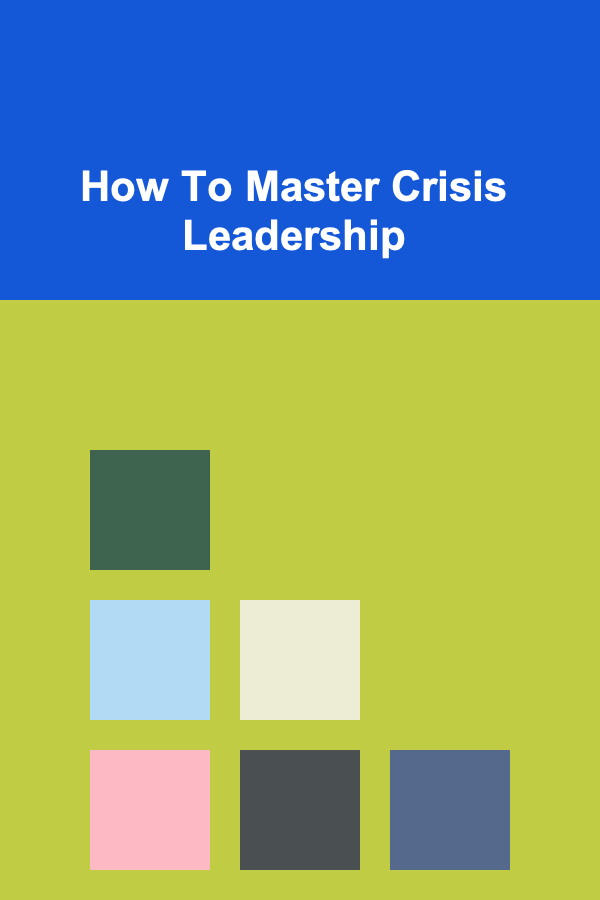
Pharmacist's Companion: Navigating the Complexities of Pharmaceutical Management
ebook include PDF & Audio bundle (Micro Guide)
$12.99$11.99
Limited Time Offer! Order within the next:

In today's rapidly evolving healthcare environment, the role of pharmacists has expanded far beyond the traditional task of dispensing medications. Pharmacists are now critical members of the healthcare team, tasked with managing complex medication regimens, providing personalized care, and ensuring optimal therapeutic outcomes for patients. With the growing prevalence of chronic diseases, polypharmacy, and emerging drug therapies, the complexity of pharmaceutical management has increased significantly. As such, pharmacists must navigate these complexities with precision and expertise, serving as both healthcare providers and advocates for patient safety.
This actionable guide explores the fundamental challenges pharmacists face in managing pharmaceutical care, offering practical strategies and insights to ensure effective medication management, enhance patient safety, and optimize therapeutic outcomes.
Understanding the Complexity of Pharmaceutical Management
Pharmaceutical management refers to the comprehensive oversight of medication use throughout a patient's healthcare journey. This includes the selection, dosing, administration, monitoring, and adjustment of medications to achieve the desired therapeutic outcomes. The complexity arises from multiple factors, such as the following:
- Multiple Chronic Conditions: Many patients suffer from multiple chronic diseases (e.g., diabetes, hypertension, asthma), each requiring different medication regimens. The interplay of these medications can lead to adverse drug interactions and complicate the treatment process.
- Polypharmacy: The use of multiple medications, especially in elderly populations, is a common challenge. Managing polypharmacy requires careful assessment to minimize the risk of drug-related problems (DRPs), such as drug interactions, duplicate therapy, or non-adherence.
- Emerging Therapies and Drug Classifications: New drug classes and treatment regimens are continually being introduced. Pharmacists need to stay updated with the latest pharmacological research, ensuring they understand new medications, their mechanisms of action, side effects, and potential drug interactions.
- Patient-Specific Factors: Individual factors such as age, genetics, comorbidities, and lifestyle choices significantly influence medication management. Pharmacists must personalize therapy to address these unique needs while preventing complications.
Actionable Strategies for Effective Pharmaceutical Management
To successfully navigate these complexities, pharmacists must employ a multifaceted approach, integrating clinical knowledge, patient-centered care, and cutting-edge technology. Below are actionable strategies that can help pharmacists optimize pharmaceutical management.
1. Comprehensive Medication Therapy Management (MTM)
Medication Therapy Management (MTM) is a patient-centered service that involves assessing and optimizing the medications a patient is taking. MTM focuses on identifying, resolving, and preventing drug-related problems, thus ensuring that patients achieve optimal therapeutic outcomes.
Tactics for Implementing MTM:
- Conduct Thorough Medication Reviews: Regularly review the patient's medication list, including over-the-counter drugs, supplements, and herbal products. This review should be aimed at identifying potential issues such as duplicate therapy, drug interactions, inappropriate drug choices, and improper dosing.
- Address Medication Non-Adherence: Non-adherence is a significant issue in managing chronic conditions. Engage with patients to understand the reasons for non-adherence, which can range from forgetfulness and side effects to financial constraints. Offer solutions such as blister packaging, medication synchronization, or setting up reminders through apps.
- Collaborate with Healthcare Providers: Pharmacists should work closely with physicians, nurses, and other healthcare providers to ensure that the medication regimen is optimized for each patient. Regular communication allows for adjustments to be made when necessary, such as changing medications or doses in response to side effects or changing health conditions.
2. Monitoring and Follow-Up
Pharmaceutical management is not a one-time intervention but a continuous process that requires ongoing monitoring. Pharmacists play a crucial role in ensuring that patients are adhering to their medication regimens and that the medications are achieving the desired outcomes.
Tactics for Effective Monitoring:
- Routine Follow-Ups: Schedule follow-up appointments to assess the effectiveness of the treatment and to check for adverse effects or potential complications. Follow-ups can be in person, over the phone, or via telemedicine, depending on the patient's preference and health status.
- Utilize Diagnostic Tools: Pharmacists should make use of diagnostic tools, such as blood pressure monitors, glucose meters, and cholesterol testing kits, to monitor the patient's response to therapy in real time. These tools help pharmacists adjust the medication regimen promptly if the patient's condition does not improve or worsens.
- Patient Education on Monitoring: Educate patients on how to monitor their own health at home. For example, advise diabetic patients on how to check their blood sugar levels regularly and interpret the results. Empowering patients to track their health indicators allows them to take a more active role in their care.
3. Patient-Centered Care and Communication
Effective communication with patients is the cornerstone of pharmaceutical management. Pharmacists must go beyond just dispensing medications and engage patients in conversations about their treatment plans. Understanding the patient's concerns, health goals, and preferences ensures that the treatment plan is tailored to their specific needs.
Tactics for Enhancing Communication:
- Active Listening: Practice active listening by giving patients the time to express their concerns and thoughts about their medications. Use open-ended questions to encourage patients to share information about their health, treatment experiences, and any difficulties they face with their medications.
- Motivational Interviewing: Use motivational interviewing techniques to help patients explore their feelings about their medications and address any ambivalence they might have. This patient-centered approach fosters collaboration and helps patients feel more invested in their treatment.
- Simplify Complex Information: Medications, side effects, and treatment plans can be overwhelming for patients. Use plain language, visual aids, and written instructions to make the information more understandable. For example, provide patients with a simple medication schedule that shows when and how to take their medications.
4. Addressing Drug-Drug Interactions and Drug-Disease Interactions
Pharmacists are experts in understanding the pharmacokinetics and pharmacodynamics of medications. They must be vigilant in identifying and preventing drug-drug and drug-disease interactions, which can lead to adverse outcomes and complications.
Tactics for Preventing Drug Interactions:
- Use Drug Interaction Databases: Leverage comprehensive drug interaction databases, such as Micromedex or Lexicomp, to identify potential interactions between medications. These databases provide valuable information on how drugs interact with each other and offer guidance on how to manage these interactions.
- Patient Profile Review: When assessing a patient's medication regimen, consider all medications they are taking, including over-the-counter drugs, supplements, and herbal remedies. Many patients do not disclose the use of these products, so it is crucial to inquire about them during consultations.
- Regularly Update Knowledge: Keep up to date with the latest drug interactions and new medications that may be introduced to the market. Pharmacists should engage in continuing education to stay informed and better manage emerging drug regimens.
5. Leveraging Technology for Improved Pharmaceutical Management
Technology plays an essential role in optimizing pharmaceutical management. From electronic health records (EHR) to medication management apps, technology helps streamline the workflow, enhance communication, and improve patient outcomes.
Tactics for Integrating Technology:
- Electronic Health Records (EHR): EHR systems provide pharmacists with a comprehensive view of the patient's medical history, including past medications, allergies, and lab results. This information allows pharmacists to make more informed decisions and reduce the risk of medication errors.
- Telepharmacy and Virtual Consultations: Telepharmacy allows pharmacists to provide consultations remotely, which is particularly useful for patients in rural or underserved areas. Virtual consultations can enhance access to medication management services and improve follow-up care.
- Medication Management Apps: Recommend apps that help patients track their medications, set reminders, and provide information about their drug regimen. These apps can enhance adherence and help patients stay on track with their prescribed treatment plans.
6. Managing High-Risk Populations
Certain populations, such as the elderly, patients with polypharmacy, and those with multiple chronic conditions, face a higher risk of medication-related problems. Pharmacists must take extra care in managing these high-risk groups.
Tactics for Managing High-Risk Populations:
- Tailor Medication Regimens: In elderly patients, consider factors such as renal and hepatic function, which may affect drug metabolism. Reduce dosages, when necessary, to avoid toxicity or adverse effects.
- Review and Simplify Medication Schedules: For patients on multiple medications, work with them to simplify their regimens. This might include switching to combination drugs or recommending once-daily dosing to improve adherence.
- Provide Care Coordination: Collaborate with other healthcare providers to coordinate care for patients with complex medical needs. Regular meetings and information-sharing can ensure that all aspects of the patient's health are addressed.
Conclusion
Navigating the complexities of pharmaceutical management requires a multifaceted approach that integrates clinical expertise, patient-centered care, and the latest technological tools. Pharmacists, as vital members of the healthcare team, have the knowledge and skills to optimize medication regimens, prevent drug-related problems, and improve patient outcomes. By adopting comprehensive strategies such as MTM, patient education, and careful monitoring, pharmacists can help guide patients through the complexities of their treatment plans and ensure safer, more effective medication use.
Through a commitment to continuous learning, patient engagement, and collaboration with other healthcare professionals, pharmacists can become true companions in the management of patients' pharmaceutical care, ultimately contributing to improved health and well-being.

How to Maximize Natural Light in Your Home with Strategic Window Treatments
Read More
How to Reorganize Your Home for Maximum Space Efficiency
Read More
How to Use Lighting to Complement Your Furniture and Decor
Read More
How to Use ChatGPT for Code Debugging
Read More
How To Master Crisis Leadership
Read More
How To Find TV Shows That Teach You Something New
Read MoreOther Products

How to Maximize Natural Light in Your Home with Strategic Window Treatments
Read More
How to Reorganize Your Home for Maximum Space Efficiency
Read More
How to Use Lighting to Complement Your Furniture and Decor
Read More
How to Use ChatGPT for Code Debugging
Read More
How To Master Crisis Leadership
Read More